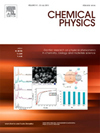CHEMICAL PHYSICS
SCI/SCIE
- 雜志名稱(chēng):化學(xué)物理學(xué)
- 簡(jiǎn)稱(chēng):CHEM PHYS
- 期刊ISSN:0301-0104
- 大類(lèi)研究方向:化學(xué)
- 影響因子:1.822
- 數(shù)據(jù)庫(kù)類(lèi)型:SCI/SCIE
- 是否OA:No
- 出版地:NETHERLANDS
- 年文章數(shù):196
- 小類(lèi)研究方向:化學(xué)-物理化學(xué)
- 審稿速度:約2.0個(gè)月
- 平均錄用比例:50%
官方網(wǎng)站:http://www.journals.elsevier.com/chemical-physics/
投稿網(wǎng)址:https://www.evise.com/evise/faces/pages/login/login.jspx?resourceUrl=%2Ffaces%2Fpages%2Fnavigation%2FNavController.jspx%3FJRNL_ACR%3DCHEMPHYS%26
CHEMICAL PHYSICS
英文簡(jiǎn)介Criteria for publication in Chemical Physics are novelty, quality and general interest in experimental and theoretical chemical physics and physical chemistry. Articles are welcome that deal with problems of electronic and structural dynamics, reaction mechanisms, fundamental aspects of catalysis, solar energy conversion and chemical reactions in general, involving atoms, molecules, proteins, clusters, surfaces, interfaces and bulk matter. Reports on new methodologies and comprehensive assessments of existing ones, as well as applications to new types of problems are especially welcome. Experimental papers are expected to be brought into relation with theory, and theoretical papers should be connected to present or future experiments. Manuscripts that apply standard methods to specific physical-chemical problems and/or to specific systems are appropriate if they report novel results for an important problem of high interest and/or if they provide significant new insights.Manuscripts describing routine use or minor extensions or modifications of established and/or published experimental and theoretical methodologies are not appropriate for the journal. In addition, manuscripts describing analytical procedures that use established spectroscopic techniques, such as for sample characterization, will not be accepted for publication, even if they appear new or improved with respect to procedures previously used.In addition to regular research papers, Chemical Physics publishes invited perspectives articles (called ChemPhys Perspectives) and Special Thematic Issues. Each Chemical Physics Special Issue provides a snapshot of the leading edge in current research of a particular field in chemical physics, and contains invited articles by specialists in that field. The objective is to create a collection of articles representative of the newest findings in a field and equivalent to that covered at a topical conference.
CHEMICAL PHYSICS
中文簡(jiǎn)介《化學(xué)物理》的出版標(biāo)準(zhǔn)是標(biāo)新立異、高質(zhì)量和對(duì)實(shí)驗(yàn)和理論化學(xué)、物理化學(xué)的普遍興趣。歡迎討論電子和結(jié)構(gòu)動(dòng)力學(xué)、反應(yīng)機(jī)理、催化的基本方面、太陽(yáng)能轉(zhuǎn)換和一般化學(xué)反應(yīng)的文章,涉及原子、分子、蛋白質(zhì)、團(tuán)簇、表面、界面和大塊物質(zhì)。特別歡迎關(guān)于新方法的報(bào)告和對(duì)現(xiàn)有方法的全面評(píng)估,以及對(duì)新類(lèi)型問(wèn)題的應(yīng)用。實(shí)驗(yàn)論文要與理論聯(lián)系起來(lái),理論論文要與現(xiàn)在或?qū)?lái)的實(shí)驗(yàn)聯(lián)系起來(lái)。將標(biāo)準(zhǔn)方法應(yīng)用于特定的物理化學(xué)問(wèn)題和/或特定的系統(tǒng)的手稿,如果它們報(bào)告了對(duì)一個(gè)重要問(wèn)題的高興趣的新結(jié)果和/或如果它們提供了重要的新見(jiàn)解,是合適的。描述常規(guī)使用或?qū)σ呀⒑?或已發(fā)表的實(shí)驗(yàn)和理論方法進(jìn)行小的擴(kuò)展或修改的手稿不適合在該期刊上發(fā)表。此外,描述使用現(xiàn)有光譜技術(shù)的分析程序的手稿,例如用于樣品表征的分析程序,將不被接受出版,即使與以前使用的程序相比,這些手稿似乎是新的或改進(jìn)過(guò)的。除了定期的研究論文,化學(xué)物理學(xué)還發(fā)表邀請(qǐng)透視文章(稱(chēng)為ChemPhys透視)和專(zhuān)題問(wèn)題。每一期的化學(xué)物理特刊都提供了當(dāng)前化學(xué)物理某一特定領(lǐng)域的前沿研究概況,并載有該領(lǐng)域?qū)<业奶匮恼隆F淠康氖蔷幹埔惶孜恼拢硪粋€(gè)領(lǐng)域的最新研究結(jié)果,相當(dāng)于專(zhuān)題會(huì)議的報(bào)告。
CHEMICAL PHYSICS
中科院分區(qū)| 大類(lèi)學(xué)科 | 分區(qū) | 小類(lèi)學(xué)科 | 分區(qū) | Top期刊 | 綜述期刊 |
| 化學(xué) | 3區(qū) | CHEMISTRY, PHYSICAL 物理化學(xué) PHYSICS, ATOMIC, MOLECULAR & CHEMICAL 物理:原子、分子和化學(xué)物理 | 4區(qū) 4區(qū) | 否 | 否 |
CHEMICAL PHYSICS
JCR分區(qū)| JCR分區(qū)等級(jí) | JCR所屬學(xué)科 | 分區(qū) | 影響因子 |
| Q3 | PHYSICS, ATOMIC, MOLECULAR & CHEMICAL | Q3 | 2.552 |
| CHEMISTRY, PHYSICAL | Q3 |
CHEMICAL PHYSICS
中科院JCR分區(qū)歷年趨勢(shì)圖CHEMICAL PHYSICS
影響因子精選同類(lèi)領(lǐng)域期刊,熱門(mén)推薦輕松get~
-
- ACCOUNTS OF CHEMICAL RESEARCH
- 期刊ISSN:0001-4842
- 大類(lèi)研究方向:化學(xué)
- 影響因子:24.466
- 數(shù)據(jù)庫(kù)類(lèi)型:SCI/SCIE
- 咨詢(xún)投稿
-
- ChemistrySelect
- 期刊ISSN:2365-6549
- 大類(lèi)研究方向:化學(xué)
- 影響因子:2.307
- 數(shù)據(jù)庫(kù)類(lèi)型:
- 咨詢(xún)投稿
-
- JOURNAL OF INCLUSION PHENOMENA AND MACROCYCLIC CHEMISTRY
- 期刊ISSN:1388-3127
- 大類(lèi)研究方向:化學(xué)
- 影響因子:
- 數(shù)據(jù)庫(kù)類(lèi)型:
- 咨詢(xún)投稿
-
- Frontiers in Chemistry
- 期刊ISSN:2296-2646
- 大類(lèi)研究方向:化學(xué)
- 影響因子:5.545
- 數(shù)據(jù)庫(kù)類(lèi)型:
- 咨詢(xún)投稿
-
- Topics in Current Chemistry
- 期刊ISSN:2365-0869
- 大類(lèi)研究方向:化學(xué)
- 影響因子:8.905
- 數(shù)據(jù)庫(kù)類(lèi)型:
- 咨詢(xún)投稿
-
- ACS Central Science
- 期刊ISSN:2374-7943
- 大類(lèi)研究方向:化學(xué)
- 影響因子:18.728
- 數(shù)據(jù)庫(kù)類(lèi)型:
- 咨詢(xún)投稿
精選常見(jiàn)問(wèn)題,答疑解惑輕松get~
- 三篇ssci論文怎么同時(shí)投出去
- 中文核心和sci哪個(gè)影響力更大
- 中科院一區(qū)和JCR一區(qū)期刊占比區(qū)別
- 發(fā)ssci如何快速找合適的期刊
- 資源保護(hù)方面論文投sci指導(dǎo)
- 外貿(mào)行業(yè)論文發(fā)ssci周期長(zhǎng)嗎
- 國(guó)外的sci投到錄用一般多久
- ssci期刊國(guó)內(nèi)認(rèn)可度
- 核能應(yīng)用論文翻譯英文發(fā)sci容易的方法
- 人口老齡化研究論文符合ssci領(lǐng)域嗎
- sci開(kāi)源和不開(kāi)源分別是什么意思?有什么影響?
- ssci發(fā)表是高水平學(xué)術(shù)論文嗎
- 生態(tài)修復(fù)主題英文論文會(huì)收錄哪些數(shù)據(jù)庫(kù)
- 哲學(xué)專(zhuān)業(yè)論文發(fā)英文期刊
- 中科院sci四個(gè)區(qū)的劃分
- ssci期刊和sci期刊的區(qū)別
- ESCI和SCIE要分清
- ssci送審論文多久出結(jié)果
- ssci論文二作有用嗎
- 水土保持類(lèi)英文期刊好選嗎
- ssci期刊論文一定會(huì)檢索嗎
 投稿咨詢(xún)
投稿咨詢(xún)


















